The end of the year is approaching, and you couldn’t choose a better time to visit another country. In fact, one popular superstition involves walking outside with a suitcase to attract travel opportunities! Discover the enchanting New Year traditions in Peru 2026, where celebrations burst with color, music, and hope across the entire nation. From golden coastal beaches to mystical Andean valleys and the vibrant Amazon jungle, Peruvians ring in the Año Nuevo with rituals mixing joy, symbolism, and ancient wisdom. Spending December 31st it’s an unforgettable cultural experience filled with positive energy and fresh beginnings. Keep reading to learn how you can participate in these authentic traditions!
Why do we celebrate the New Year?
The arrival of a year is always received with joy in Peru. The streets fill with music, hugs, and good wishes, but also with cábalas that reflect the essence of the Peruvian people: optimistic, spiritual, and deeply connected to their traditions. In every corner of the country is the same, from the coast to the highlands and the jungle, families prepare to say goodbye to the old year with hope and welcome the new one with faith and enthusiasm.
That is why the New Year traditions in Peru are performed with the desire to attract prosperity, love, health, and travel as 2026 begins, which in the Chinese calendar will be the Year of the Horse, the animal symbolizing energy, freedom, and progress.
Symbolism of the new year for the Incas
For the Incas, the New Year had a profound spiritual and agricultural meaning. It was not only about celebrating the passage of time, but also about renewing the connection between humans, nature, and the gods. Each new cycle marked the beginning of the sowing season and was a reason to give thanks to Inti (the Sun God) and Pachamama (Mother Earth) for the fertility of the fields. During these dates, offerings, dances, and ceremonies such as Inti Raymi were performed, symbolizing the rebirth of life, abundance, and harmony between heaven and earth.
Today, travelers can still feel this ancestral energy during a Sacred Valley full day experience. Visiting the towns of Pisac, Urubamba, and Ollantaytambo, you’ll see how Andean traditions have endured through time. Many local communities continue to honor the earth with small rituals, burning incense or placing coca leaves and flowers as offerings of gratitude. The valley’s terraced fields, crystal-clear rivers, and snowcapped peaks create an atmosphere that makes it easy to understand why this land was considered sacred.
You might be interested: Christmas Traditions in Peru: Festivities & Food
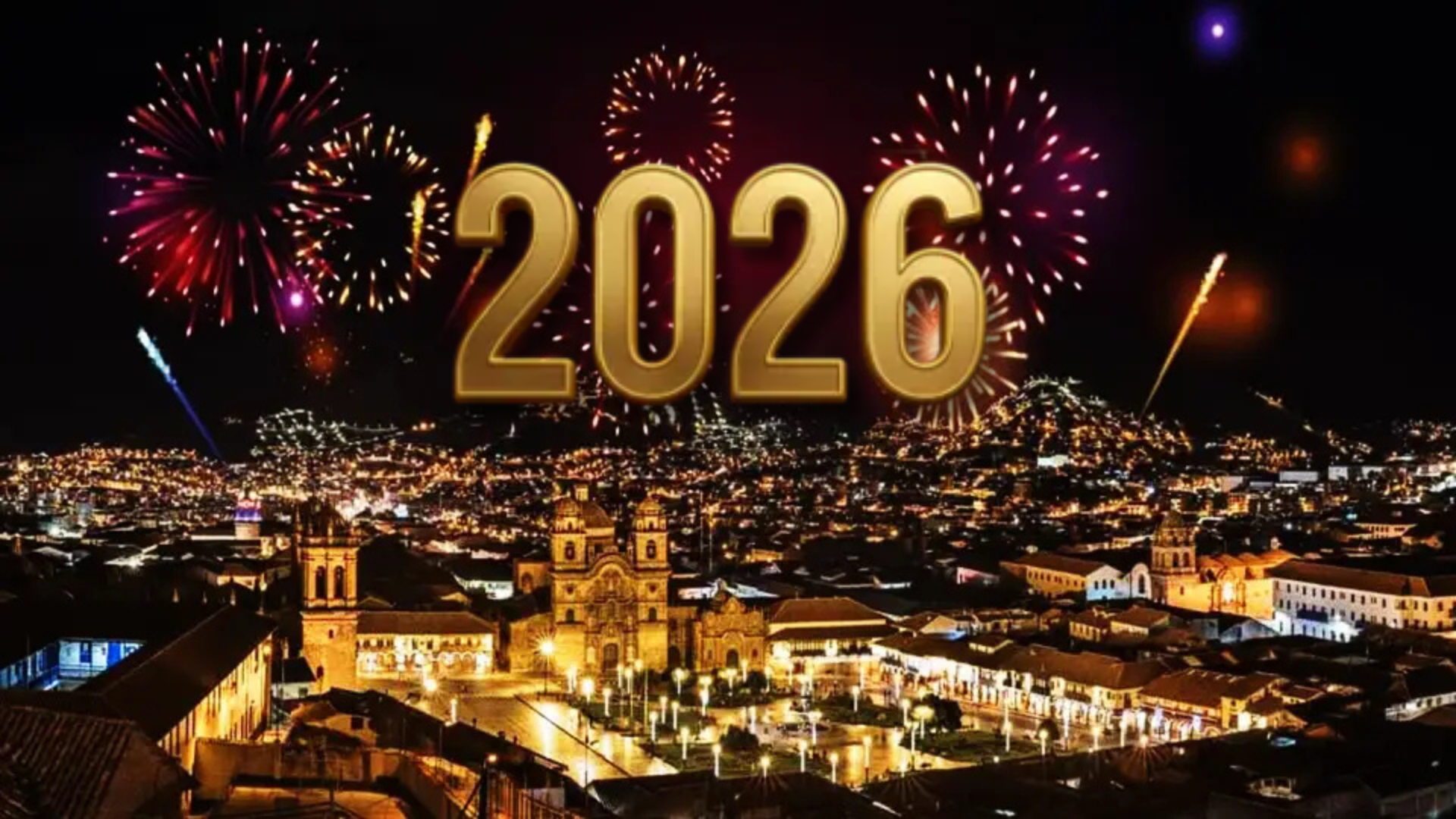
Popular New Year traditions in Peru
With over 3,000 festivals celebrated throughout the year across the country, it’s safe to say Peruvians love to celebrate, and more importantly, we know how to do it right! December 31st is no exception, with many cities organizing outdoor concerts and street parties for those celebrating solo or simply preferring to ring in the occasion under the stars.
From the famous grape tradition found in many countries to uniquely Peruvian rituals involving yellow underwear and traveling suitcases, these New Year traditions in Peru are passed down through generations and warmly shared with visitors. So grab your yellow underwear, pack an empty suitcase, and get ready to discover the fascinating customs that make December 31st in Peru absolutely unforgettable.
1. Wearing yellow for Good Fortune
One of the most visible customs is wearing yellow clothing, especially underwear, as the clock approaches midnight. The color represents the sun, joy, and abundance. Peruvians believe that dressing in yellow brings wealth and good energy for the coming year. Some even wear the garment inside out and flip it right after midnight to “activate” their luck.
2. The Twelve grapes of Luck
Eating twelve grapes at midnight is a favorite tradition across the country. Each grape represents one month and with every bite, a wish is made for health, love, or prosperity. It’s a cheerful moment shared among family and friends, often accompanied by laughter, fireworks, and the sound of cumbia music filling the air.
3. Running with a suitcase
For those who dream of traveling, running around the block with an empty suitcase just after midnight is a must. This playful ritual symbolizes the wish to explore new destinations in the year ahead. It’s common to see neighbors doing this together, smiling and cheering as they dash down the street.
4. Carrying lentils
Lentils symbolize wealth and abundance. Some people keep a handful in their pockets or wallets to attract financial stability, while others eat a spoonful right at midnight. Their round shape, resembling old coins, makes them a popular charm for good fortune.
5. Baño de Florecimiento (Floral Bath)
In the Amazon and some Andean towns, people prepare a floral bath using petals, herbs, cinnamon, and perfumes to cleanse negative energy and invite renewal. This ritual, often performed before midnight, purifies both body and spirit. Many also add symbolic elements like coins or flowers to attract prosperity and inner peace.
6. Burning Año Viejo Dolls
A beloved custom is the burning of “Año Viejo” dolls, which are made from old clothes, sawdust, and paper. The dolls represent the old year — its hardships and worries. When set on fire, they symbolize letting go of negativity and beginning with a clean slate. In some neighborhoods, people make large effigies resembling public figures, turning the ritual into a fun and communal event.
7. The Ekeko: God of Prosperity
In the Andean highlands, many households welcome the Ekeko, a small figure known as the god of abundance. People place miniature versions of food, money, or houses around him to attract prosperity and protection. Lighting incense or candles near the figure at midnight is believed to invite blessings for the year ahead.
You might be interested: Festivals in Cusco month by month
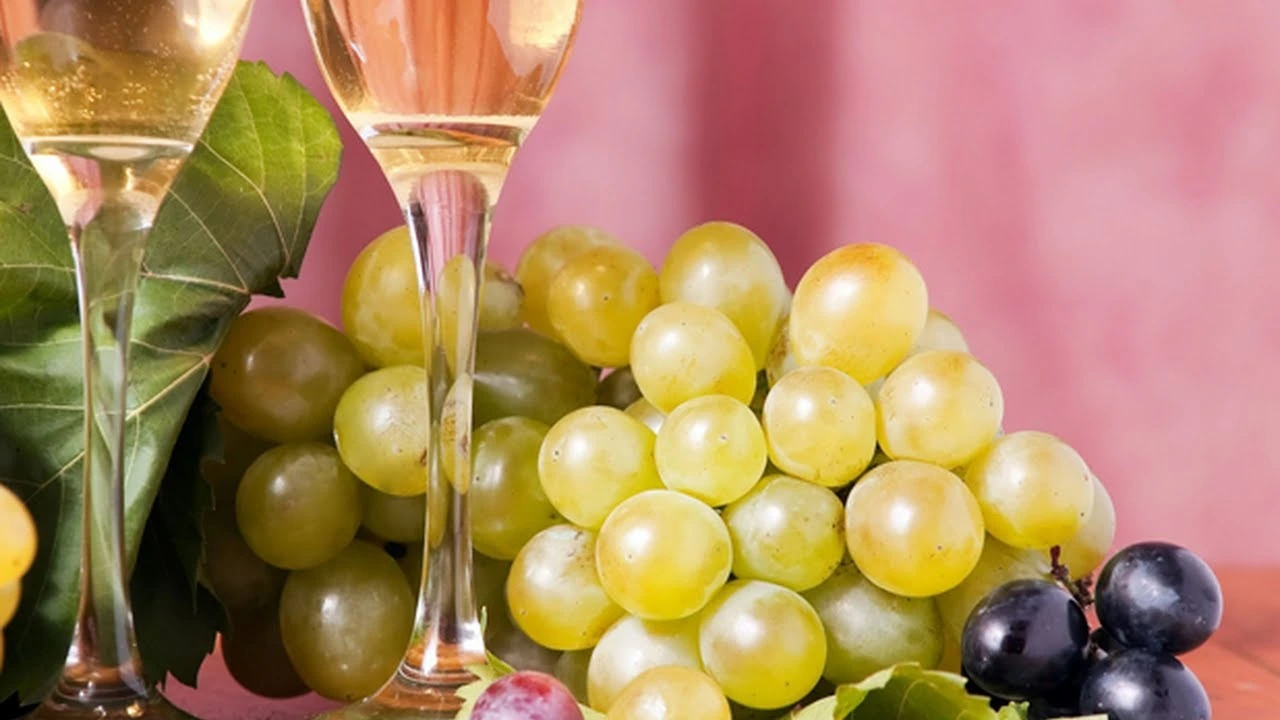
New year traditions on the Coast
If you love warm nights, ocean breezes, and endless dancing, celebrating New Year on the Peruvian coast is an experience you won’t forget. Coastal cities like Lima, Trujillo, Paracas, and Máncora become the heart of the celebration, blending local joy with the charm of the Pacific Ocean. As the sun sets on December 31st, beaches fill with families and travelers preparing to welcome 2026 surrounded by laughter, music, and fireworks that illuminate the entire shore.
One of the most practiced rituals is eating 12 grapes at midnight, one for each month of the year, while making wishes for prosperity, health, and love. Many also wear yellow clothing or light small bonfires to “burn away” bad energy from the past year. On the beaches of Máncora and Lima, music takes over the night with cumbia, salsa, and reggaetón, turning the celebration into a vibrant beach party that lasts until sunrise.
For food lovers, the coastal has its own flavor. After midnight, it’s common to enjoy a refreshing ceviche, seafood platters, or chicharrón de pescado to welcome the year with energy and good fortune. In Paracas, where the atmosphere is calmer, many prefer romantic dinners by the sea, watching the fireworks reflect over the water.
New year traditions in the Amazon
Celebrating New Year in the Peruvian Amazon is a magical experience where nature, spirituality, and joy come together in perfect harmony. As the year comes to an end, towns along the rivers of Puerto Maldonado, Iquitos, and Pucallpa fill with color, music, and ancestral rituals that reflect the deep connection Amazonian communities have with the earth and the spirits that protect it. Unlike the noise of the big cities, here the celebration feels more magic.
One of the most meaningful customs is the “baño de florecimiento”, a ritual cleansing performed to wash away negative energy and invite prosperity. In many communities, people go to the river to bathe at sunset or just before midnight, immersing themselves in the cool, flowing water as a way of starting purified and renewed. These river baths are often accompanied by flowers, aromatic herbs, and prayers led by elders or shamans who ask the spirits of the jungle for protection and good fortune.
When midnight arrives, the celebration becomes pure joy. People gather in open spaces, sharing traditional dishes such as juanes, tacacho con cecina, or patarashca, all seasoned with regional flavors and accompanied by the rhythm of drums and guitars. Families and visitors dance to Amazonian cumbia and local folk music, creating a festive energy that lasts until dawn. Some towns even hold boat parades or fireworks over the river, reflecting the lights on the water in a spectacle that feels both natural and spiritual.
You might be interested: Visiting Peru in November Guide
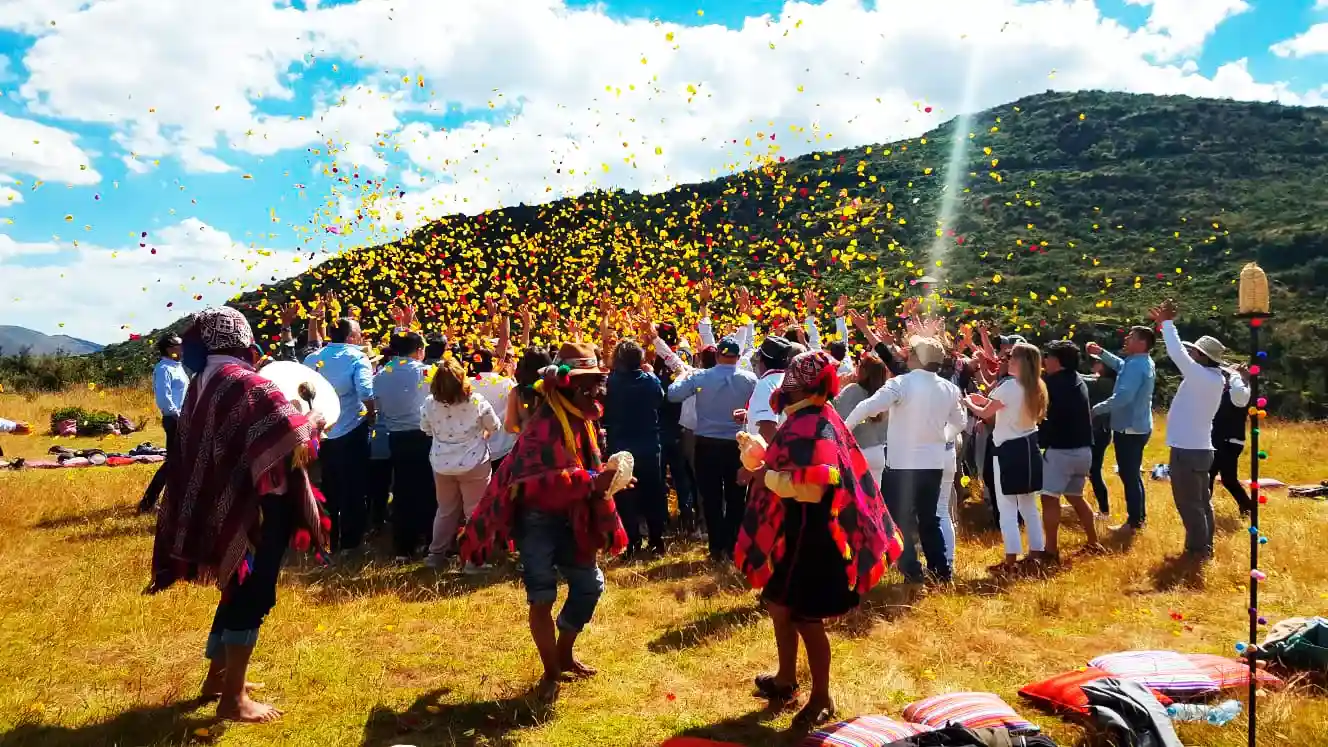
New year traditions in the Andes
In the Peruvian Andes, the arrival of the year 2026 is a celebration that blends deep spirituality with the vibrant colors of local culture. As the last sun of December sets behind the mountains, families and communities gather to thank Pachamama (Mother Earth) and Inti (the Sun God) for the year that ends, and to ask for abundance, good harvests, and harmony in the new cycle. The New Year traditions in Peru take on a particularly sacred meaning in these highlands, where time is marked not only by the calendar but by nature’s rhythm and ancestral wisdom.
The celebrations begin early in the evening with offerings known as “despachos”, small rituals made with coca leaves, seeds, grains, and sweets, arranged on colorful fabrics. These offerings are burned as a sign of gratitude and renewal, releasing prayers into the clear Andean sky. At midnight, fireworks light up towns like Cusco, Puno, and Ayacucho, while church bells echo through the valleys. People embrace, dance to traditional huaynos and marinera serrana, and share homemade drinks like ponche or chicha de jora to toast.
New Year in Lima
Lima, the City of Kings, never says goodbye to the old year quietly. As December 31st approaches, the Peruvian capital transforms into a vibrant mix of lights, sounds, and joyful chaos. From the elegant dinners in Miraflores and Barranco to the bustling streets of downtown Lima, every corner of the city comes alive to celebrate the arrival of a new beginning. Locals gather with friends and family to enjoy food, music, and, of course, the famous midnight fireworks that light up the sky from the coast to the hills.
One of Lima’s most beloved customs is the burning of “Año Viejo” dolls, handmade figures that represent the year that’s ending. At midnight, people set them on fire as a symbolic act of renewal, leaving behind misfortunes and making space for better times. Others follow classic Peruvian rituals like eating 12 grapes, wearing yellow clothes, or running around the block with a suitcase to attract future travels.
Along the Costa Verde, thousands gather to watch the fireworks reflecting over the Pacific Ocean, while beach clubs and rooftop bars host parties that last until dawn. In Barranco, the bohemian district, music and laughter spill onto the streets, and couples dance under the warm summer night.
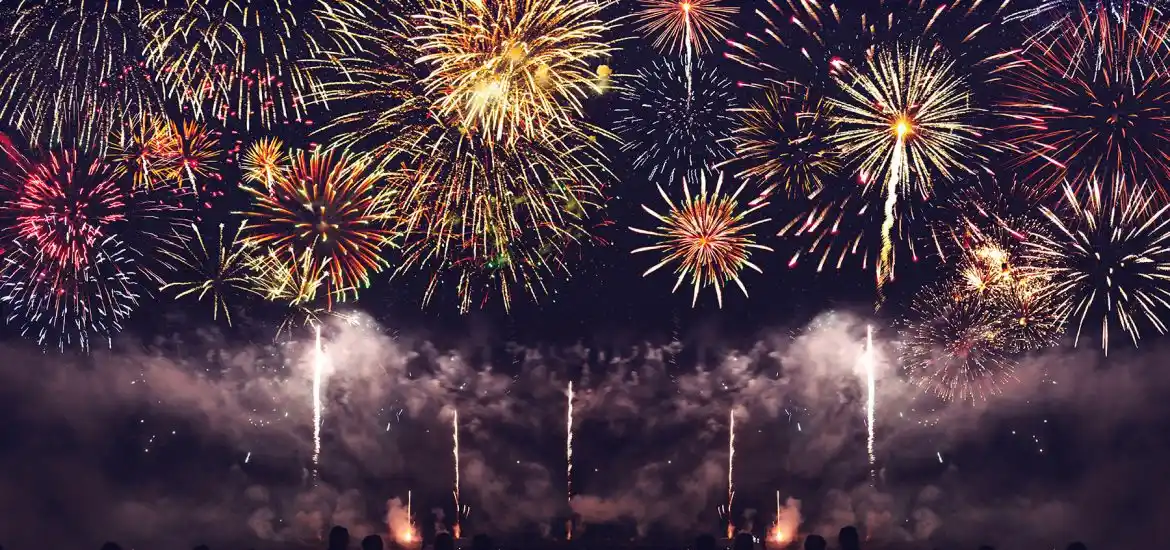
New Year in Cusco
As the capital of the Inca Empire and a UNESCO World Heritage Site, Cusco welcomes thousands of locals and travelers every December 31st, all eager to live the magic of this historical city under the stars of the Andes.
The main celebration takes place in the Plaza de Armas, where people begin gathering hours before midnight. By nightfall, the square is filled with music, laughter, and anticipation. When the clock strikes twelve, the sky lights up with fireworks, and a massive crowd starts running around the plaza seven times, a local custom believed to bring good luck and prosperity for the coming year. The atmosphere is magic, strangers hug, bands play Andean music, and the ringing of church bells echoes through the surrounding colonial streets.
Many families also perform offerings to Pachamama (Mother Earth), lighting candles or burning incense to thank her for protection and abundance. And just beyond the city, travelers walking the classic inca trail experience that same spirit of renewal in its purest form. The four-day trek to Machu Picchu passes through sacred valleys, stone temples, and ancient terraces that once aligned with the solar calendar
You might be interested: 15 Traditional food in Peru

Gastronomic New Year in Peru
Gastronomy is, of course, an essential part of the celebration of the New Year traditions in Peru. December 31st dinner is a feast that combines tradition, symbolism, and regional flavors. While families across the country gather around tables laden with food, certain dishes have earned their place as essential elements of the celebration, each carrying its own meaning and connection to hopes for the coming year.
- Lechón: The lechón, or roasted pork, is the undisputed star of most Peruvian tables. It’s popularly prepared in the form of chicharrón, where young pork is marinated overnight in chicha de jora, beer, or vinegar with garlic, red pepper paste, cumin, and spices. The meat roasts slowly for hours until the exterior becomes gloriously crispy while the inside stays tender. The symbolism is beautiful: pigs root forward when they eat, representing progress and moving toward the future with optimism.
- Turkey: Turkey has become a popular centerpiece, prepared with distinctly Peruvian flair. The bird gets marinated in traditional spices like ají panca, then baked for several hours. It’s often served with rice, pasta salad, or applesauce.
Tamales: Both sweet and savory versions are staples of the celebration. These are made with cornmeal and various fillings, wrapped in banana leaves or corn husks, and steamed to perfection. Making tamales together is as much about family bonding as it is about food. - Causa: This iconic layered dish of seasoned yellow potato with various fillings appears as an appetizer. Coastal families serve it with tuna or chicken, while inland versions get creative with local ingredients.
Rice and Salads: Rice is non-negotiable at Peruvian celebrations, and fresh salads featuring seasonal summer fruits add refreshing contrast to the heartier dishes. - Panetón and Chocolatada: The absolute star of midnight is panetón, the sweet Italian-style bread filled with dried fruits and raisins that’s been completely adopted into Peruvian culture. It’s traditionally served with hot chocolatada (a rich, creamy hot chocolate) or champagne right at the stroke of twelve. Debating which brand makes the best panetón (Todinno, D’Onofrio, or Motta are the usual contenders) is a serious holiday topic. Some families go for chocotón, the chocolate chunk version that’s ridiculously indulgent.
Other typical dishes
- Anticuchos: These grilled beef heart skewers marinated in ají panca, cumin, garlic, and vinegar are a street food favorite that often makes it to family celebrations. Served with boiled potatoes and corn, they add a smoky, savory element to the meal.
Papa a la Huancaína: This classic appetizer features boiled yellow potatoes covered in a creamy, spicy cheese sauce made with ají amarillo, evaporated milk, and crackers. It’s typically garnished with hard-boiled eggs and olives, providing a rich, tangy start to the feast. - Chicharrón de Pollo: Crispy fried chicken pieces seasoned with Peruvian spices often appear alongside the main dishes. It’s especially popular with kids and adds variety to the protein options on the table.
- Rocoto Relleno: In southern regions like Arequipa, this spicy stuffed pepper filled with seasoned ground meat, peanuts, and cheese is a must-have. It’s baked until the rocoto (a hot Peruvian pepper) softens and the cheese melts perfectly.
- Ceviche: Along the coast, some families break tradition and serve fresh ceviche as part of their celebration, especially for those preferring lighter fare. The citrusy, refreshing dish balances out the heavier options perfectly.
You might be interested: All about the Peruvian Amazon tribes
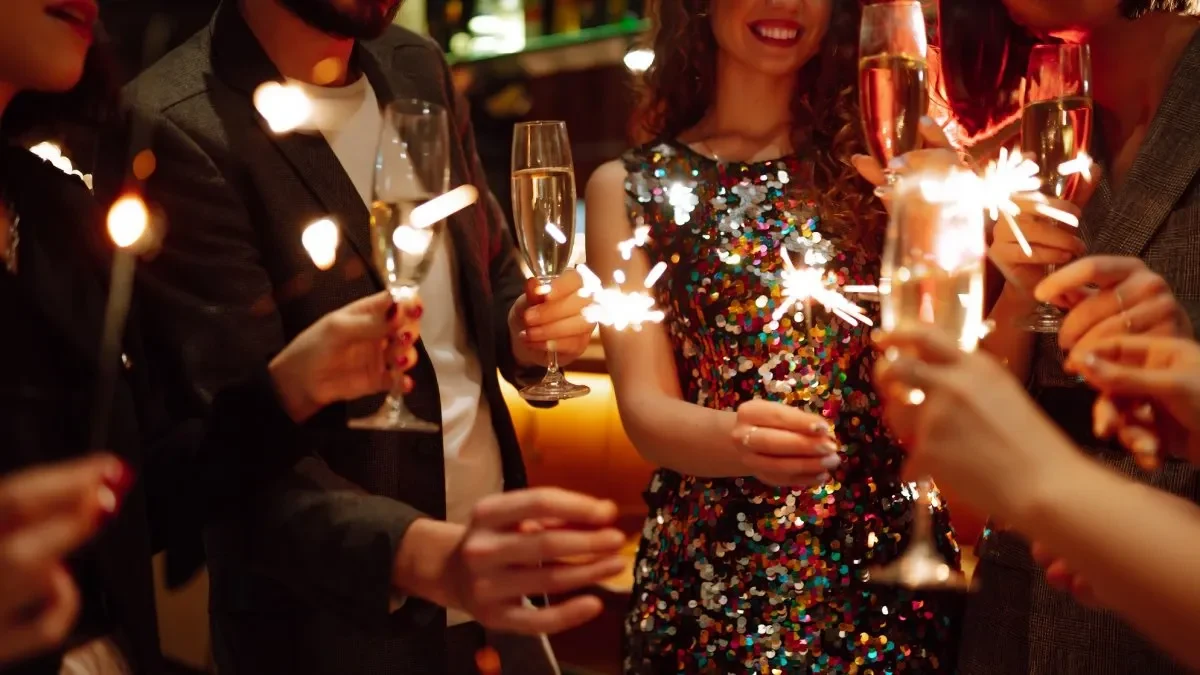
Tips for participating in New Year traditions in Peru
- Book accommodations early because hotels and hostels in popular destinations like Lima, Cusco, and Arequipa fill up quickly for December 31st. If you’re planning to experience the New Year traditions in Peru in a tourist hotspot, reserve your room at least 2-3 months in advance to avoid inflated last-minute prices.
- Buy your ritual items beforehand. Yellow underwear, colored candles, and other symbolic items fly off the shelves as the date approaches. Hit local markets or stores like Wong, Metro, or Plaza Vea by mid-December to ensure you get what you need for participating in the traditional rituals.
- Stay safe with your belongings. Large gatherings attract pickpockets. Keep your valuables secure, avoid carrying unnecessary items, and stay aware of your surroundings, especially in crowded plazas or beach areas. Celebrate with a crossbody bag or money belt rather than a backpack.
- Don’t rely on public transportation after midnight. Buses and taxis become scarce or extremely expensive after 12 AM. Plan your transportation in advance, arrange a designated driver, or book accommodation within walking distance of your celebration spot to fully enjoy the festivities without stress.
- Embrace the chaos and spontaneity. Peruvian celebrations aren’t carefully choreographed events. People might invite you to their homes, strangers become friends on the street, and plans change constantly. Go with the flow, say yes to invitations, and don’t stress about having everything perfectly planned for an authentic experience.
Welcome the New Year 2026 in Peru
The New Year traditions in Peru are your invitation to celebrate life, culture, and fresh beginnings in one of South America’s most vibrant destinations. From burning away the past to dancing until sunrise, every ritual carries meaning and joy that transcends borders. So why spend December 31st doing the same old thing when you could be eating 12 grapes at midnight in Cusco, running around the block with a suitcase in Lima, or toasting with champagne in the heart of the Amazon? Pack that suitcase, pick your lucky color, and let Peru show you how to start the year with purpose, hope, and unforgettable memories. ¡Feliz Año Nuevo!



